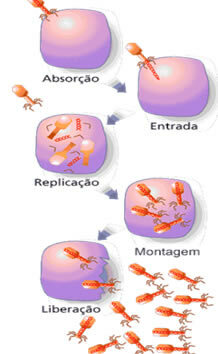Catalase is an enzyme produced by almost all living organisms. It is responsible for the decomposition of hydrogen peroxide.
Catalase is found in the peroxisomes organelle, present in animal and plant cells.
Function of Catalase
Catalase catalyzes the decomposition of hydrogen peroxide (hydrogen peroxide) to oxygen and water, according to the following chemical reaction:
2 hours2O2 + CATALASE → 2 H2O+O2
The importance of this function lies in the fact that hydrogen peroxide is a toxic substance for cells. Catalase produces water and oxygen, two substances that do not harm the body.
Upon decomposition, catalase neutralizes the toxic action of hydrogen peroxide and balances its production in the body.
The function of catalase is important for kidney and liver activity. In these organs there are numerous peroxisomes responsible for detoxifying the body. In the liver, peroxisomes and the action of catalase help to produce bile salts and neutralize toxic substances.
Catalase is considered one of the most effective enzymes found in cells. That's because a single catalase molecule can break down millions of hydrogen peroxide molecules.
Learn more about hydrogen peroxide.
Curiosity
Hydrogen peroxide is commonly used for cleaning wounds. When placed under the wounded skin, we quickly observe the formation of a froth of bubbles, which consists of the release of oxygen. This foam arises due to the action of catalase.
Check out an experiment on the action of catalase at: Chemistry Experiments.


